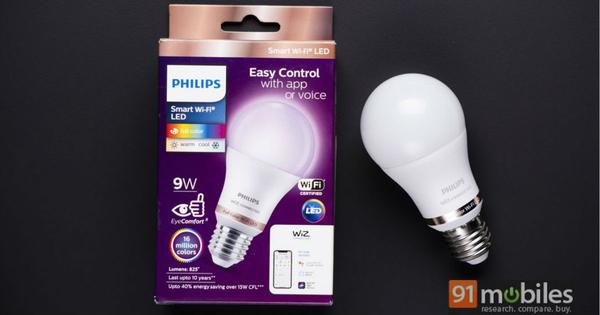Philips Lighting was one of the first manufacturers to offer a smart bulb, launching the Zigbee-powered Philips Hue line way back in 2012. Now operating under the name Signify, the company acquired a competitor—WiZ Connected—in April 2019 to diversify its offering with a line of Wi-Fi-connected smart bulbs. But the WiZ app doesn’t display the same polish as the Hue app.
The upside of connecting smart bulbs directly to your Wi-Fi network is that you don’t need to
also
buy a Zigbee-to-Wi-Fi bridge (the
Philips Hue Bridge
costs around $60). The Philips Smart Wi-Fi LED ecosystem isn’t nearly as big as the Hue ecosystem, but it does include the most common form factors—A19 and BR30—as well as downlights you can use to retrofit existing 6-inch ceiling cans (provided the cans have E26 sockets).
Christopher Null / IDG
You’ll need to drill down into the WiZ app to access detailed color settings for your smart bulb.
Dimmable white (color-temperature tunable) and dimmable color SKUs are available in all three categories. If you like the vintage look, there is also a variety of
WiZ bulbs featuring amber glass and exposed LED filaments
.
Bulbs are initially set up within the WiZ app, and a convenient routine here is ostensibly designed to let you connect the bulb to your Wi-Fi network without having to do the usual song and dance of dropping into your phone’s settings menu and connecting to each bulb’s temporary Wi-Fi access point.

The only catch: This didn’t work at all in my testing, and after a few minutes of failing to find the new bulb, WiZ directed me to the manual fallback method... and a trip to my iPhone settings. The good news is that the manual method worked without complaint, and I soon had my test bulb (a full-color BR30) on my network.
[ Further reading: The best LED smart bulbs ]
The WiZ app contains the usual features that let you assign a bulb to a room and set up scenes, schedules, and “rhythms” (automated lighting transitions designed for regular, daily use). The primary panel gives you quick access to a virtual on/off switch, a nightlight mode, and two sliders: one for brightness and one for color temperature. This interface is basically the same whether the bulb is a color bulb or a white-only model.
Signify
Philips Wi-Fi LED bulbs
are also available in the familiar A19 form factor (the tunable-white version is shown here).
To access color settings, you tap the icon that indicates the current white color temperature. Here, you can access various color presets and other preloaded lighting features, such as a flickering fireplace mode, or choose a custom color from the color wheel. Oddly, the WiZ app was laggy and aggravatingly slow on occasion during my testing, though it never crashed. All Philips Smart Wi-Fi bulbs support Alexa, Google Assistant, and Siri for voice control, letting you power bulbs on and off, dim them, and set colors where relevant. IFTTT is also supported.
Overall, I found the bulb’s light quality to be very pleasant in both white and various color modes, although the 7.2-watt bulb only puts out a disappointing 650 lumens at maximum power. I also tested a dimmable white Edison-style bulb from this lineup which drew 6 watts but which maxes out at an even less impressive 450 lumens. I had the same problem with setup with this bulb as I did with the color BR30.
Ultimately, these bulbs offer outstanding (albeit dim) light quality, and the $16 asking price for the color BR30 bulb is surprisingly affordable. (However, note that these bulbs are only available at The Home Depot.) The WiZ app clearly has some bugs that need working out, but for the time being it’s otherwise a promising product.
Note: When you purchase something after clicking links in our articles, we may earn a small commission. Read our
affiliate link policy
for more details.









